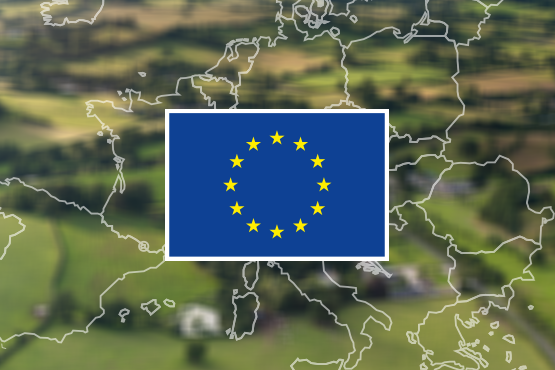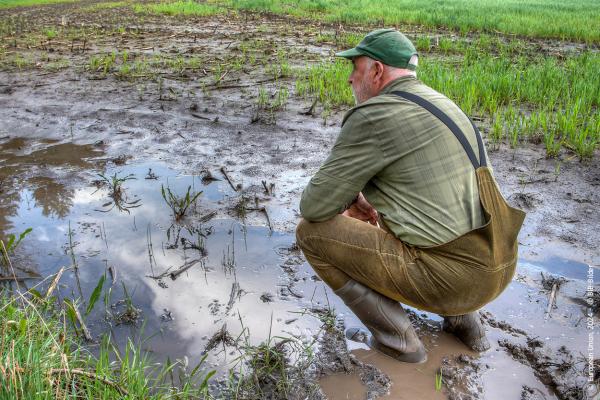
Rural development is the 'second pillar' of the common agricultural policy (CAP), reinforcing the 'first pillar' of income supports and market measures by strengthening the social, environmental and economic sustainability of rural areas.
The CAP contributes to the sustainable development of rural areas through three long-term objectives:
- fostering the competitiveness of agriculture and forestry;
- ensuring the sustainable management of natural resources and climate action;
- achieving a balanced territorial development of rural economies and communities including the creation and maintenance of employment.
CAP support for rural development
The CAP’s contribution to the EU's rural development objectives is supported by the European agricultural fund for rural development (EAFRD). The EAFRD budget for 2021-27 amounts to €95.5 billion, which includes an injection of €8.1 billion from the next generation EU recovery instrument to help address the challenges posed by the COVID-19 pandemic.
The rules for rural development spending during 2021-22 are laid out in the CAP transitional regulation, adopted on 23 December 2020. The regulation largely extends the existing rules (initially in place for the 2014-20 period), with some additional elements to ensure a smooth transition to the new CAP, which is due to begin in 2023.
Related information
Rural development in graphs and figures
Rural development programmes
EU countries implement EAFRD funding through rural development programmes (RDPs). RDPs are co-financed by national budgets and may be prepared on either a national or regional basis. While the European Commission approves and monitors RDPs, decisions regarding the selection of projects and the granting of payments are handled by national and regional managing authorities.
Each RDP must work towards at least four of the six priorities of the EAFRD:
- fostering knowledge transfer and innovation in agriculture, forestry and rural areas;
- enhancing the viability and competitiveness of all types of agriculture, and promoting innovative farm technologies and sustainable forest management;
- promoting food chain organisation, animal welfare and risk management in agriculture;
- promoting resource efficiency and supporting the shift toward a low-carbon and climate resilient economy in the agriculture, food and forestry sectors;
- restoring, preserving and enhancing ecosystems related to agriculture and forestry;
- promoting social inclusion, poverty reduction and economic development in rural areas.
The EAFRD priorities are in turn broken down into 18 specific focus areas. In their programmes, countries set out targets relating to their chosen priorities and focus areas, as well as a strategy for meeting their targets.
When devising their strategies, countries select from a 'menu' of 20 broad policy measures, which can be tailored around national and regional circumstances to deliver on one or more of the EAFRD’s priorities. Progress on targets is monitored through the common monitoring and evaluation framework (CMEF).
Notable features of RDPs
Spending on climate and environment
At least 30% of funding for each RDP must be dedicated to measures relevant for the environment and climate change, much of which is channelled through grants and annual payments to farmers who switch towards more environmentally friendly practices.
Supporting local actions
At least 5% of RDP funding must go to actions based on the LEADER / community led local development approach.
Promoting smart villages
Rural development programmes can also support the smart villages initiative, which aims to provide a versatile toolbox to foster, enable and scale up innovation in rural areas around Europe, addressing the common challenges faced by citizens living in rural territories.
Financial instruments
Through financial instruments, the EAFRD acts as a source for loans, microcredit, guarantees and equities, available to recipients in agriculture, forestry and rural areas who are undertaking financially viable projects that support the priorities of the EAFRD. Fi-Compass includes further information on EAFRD financial instruments.

Documents relating to the rural development programmes of each EU country, including partnership agreements, programme summaries, and factsheets.
European CAP Network
The European (EU) CAP Network is set up to enable networking of national CAP networks, organisations and administrations in the field of agriculture and rural development at Union level.
It serves as a forum for discussion and exchange of good practices on the implementation of the CAP for a wide variety of stakeholders, including Member State administrations, agricultural producers, evaluators, local action groups, European-wide organisations, farm advisory services providers, innovation support services and more.
The network supports the design and implementation of CAP Strategic Plans, innovation and knowledge exchange, including EIP-AGRI, and evaluation of the CAP.
The EU CAP Network provides a broad range of activities and information on the implementation of the CAP Strategic Plans across the EU, including a collection of good practices, events and publications.
The EU CAP Network replaced the European network for Rural Development (ENRD), including Evaluation Helpdesk and EIP-AGRI network.
LEADER
LEADER is a 'bottom up' approach, in which farmers, rural businesses, local organisations, public authorities and individuals from different sectors come together to form local action groups (LAGs). LAGs prepare their own local development strategies and manage their own respective budgets.
The LEADER approach strengthens bonds in local communities, encourages innovations across sectors, and facilitates knowledge sharing amongst LAGs at national and EU-wide levels.
Thanks to its success over 30 years, the LEADER approach has been adopted by the European regional development Fund (ERFD), the European social fund (ESF) and the European maritime and fisheries fund (EMFF) as part of wider community led local development (CLLD). Today LEADER / CLLD groups manage tens of thousands of projects with economic, cultural, social and environmental benefits in rural Europe.
The ENRD provides detailed information on the LEADER approach, including resources, toolkits, and a database of LAGs.
The future of rural development
Under the new CAP, rural development actions will be included under the framework of national CAP strategic plans from 2023 onwards.
Within this framework, the Commission aims to make rural development actions more responsive to current and future challenges such as climate change and generational renewal, while continuing to support European farmers in a sustainable and competitive agricultural sector. Rural development actions will also make a strong contribution to the Commission’s key priorities and strategies, such as the European Green Deal and the long-term vision for rural areas.
Legal bases
Regulation (EU) 1303/2013 – presents common rules applicable to the European structural and investment funds (ESIF)
Regulation (EU) 1305/2013 on support for rural development by the European agricultural fund for rural development (EAFRD)
Regulation (EU) 1306/2013 on the financing, management and monitoring of the common agricultural policy
Regulation (EU) 1310/2013 on support for rural development by the European agricultural fund for rural development (EAFRD)
Commission Delegated Regulation (EU) 807/2014 on support for rural development by the European agricultural fund for rural development (EAFRD) and introducing transitional provisions
Commission Delegated Regulation (EU) 640/2014 on the administration, withdrawal of support or conditions of penalties applicable to direct payments, rural development support and cross compliance
Commission Implementing Regulation (EU) 809/2014 outlining how Regulation (EU) 1306/2013 the administration and control system, rural development measures and cross compliance should be applied
Related links
Information on employment, growth, poverty and challenges in rural areas.
List of committees involved with the European Commission's work on agriculture.
Overview of EU support, agreements, and data and analysis in the forestry sector.


